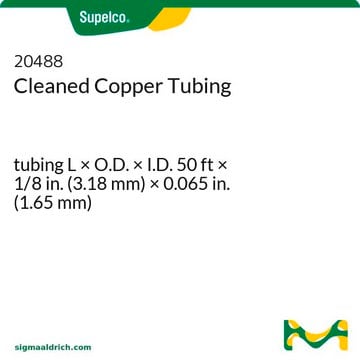360597
2,2,4-Trimethylpentane
ACS reagent, ≥99.0%
Synonym(s):
Isooctane
About This Item
Recommended Products
grade
ACS reagent
Quality Level
vapor density
3.9 (vs air)
vapor pressure
41 mmHg ( 21 °C)
Assay
≥99.0%
form
liquid
autoignition temp.
745 °F
expl. lim.
6 %
impurities
≤0.0003 meq/g Water-soluble titr. acid
≤0.005% S compounds
evapn. residue
≤0.001%
color
APHA: ≤10
refractive index
n20/D 1.391 (lit.)
bp
98-99 °C (lit.)
mp
−107 °C (lit.)
solubility
water: insoluble
density
0.692 g/mL at 25 °C (lit.)
SMILES string
CC(C)CC(C)(C)C
InChI
1S/C8H18/c1-7(2)6-8(3,4)5/h7H,6H2,1-5H3
InChI key
NHTMVDHEPJAVLT-UHFFFAOYSA-N
Looking for similar products? Visit Product Comparison Guide
General description
Application
- Synthesis of polyethyleneimine /silica hybrid nanoparticles.
- Amino acid quantification process.
- To dissolve di(2-ethylhexyl) phosphoric acid(DEHPA) to form a solution that is used in the extraction and back extraction of methylene blue.
Signal Word
Danger
Hazard Statements
Precautionary Statements
Hazard Classifications
Aquatic Acute 1 - Aquatic Chronic 1 - Asp. Tox. 1 - Flam. Liq. 2 - Skin Irrit. 2 - STOT SE 3
Target Organs
Central nervous system
Storage Class Code
3 - Flammable liquids
WGK
WGK 2
Flash Point(F)
10.4 °F - closed cup
Flash Point(C)
-12 °C - closed cup
Certificates of Analysis (COA)
Search for Certificates of Analysis (COA) by entering the products Lot/Batch Number. Lot and Batch Numbers can be found on a product’s label following the words ‘Lot’ or ‘Batch’.
Already Own This Product?
Find documentation for the products that you have recently purchased in the Document Library.
Customers Also Viewed
Our team of scientists has experience in all areas of research including Life Science, Material Science, Chemical Synthesis, Chromatography, Analytical and many others.
Contact Technical Service






